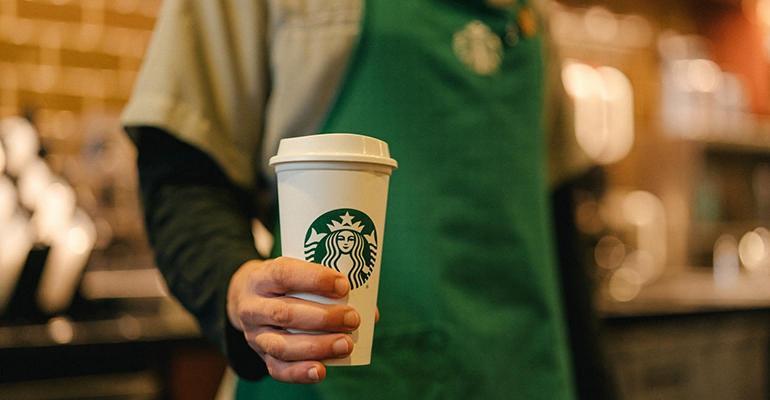Despite a strong holiday season of seasonal food and beverage sales, Starbucks’ positive performance (18% U.S. same-store sales growth) during the first quarter of 2022 was hindered by outside forces like high inflation, the omicron variant, and an industry-wide labor crisis. To address growing inflation concerns, Starbucks raised prices twice in two months — once in October and once on Jan. 1 — CEO Kevin Johnson said Tuesday during the Q1 earnings call with investors.
“In terms of elasticity, we have not seen any meaningful impact to customer demand,” Starbucks chief operating officer John Culver said during Tuesday’s earnings call. “To the contrary, our customer demand continues to grow. We're coming off a very strong quarter in terms of transaction growth at 12% for the quarter in the U.S., the highest since pre-pandemic levels, and our ticket is also very strong as well.”
During the first quarter ended on Jan. 2, the U.S. saw a significant spike in COVID-19 cases as the omicron variant spread, a factor that dampened the company’s digital sales growth. As cases surged, customers stayed home, and many were not spending as much on foodservice. As a result of health challenges, coupled with inflationary concerns that began long before the omicron variant peaked, Starbucks noted that the company’s performance was muted.
“Prior to the emergence of the omicron variant, we were experiencing some inflationary pressures and staffing issues resulting from the broader pandemic,” Johnson said Tuesday. “When the omicron surge began, inflationary costs and staffing shortages were amplified, well in excess of our expectations. These three primary factors — high inflation, COVID-related pay, and training and onboarding of new partners — impacted our profitability to approximately the same degree, even while customer demand remained strong.”
The third challenge mentioned by Johnson is the ongoing foodservice industry’s labor crisis, which the company has taken actions to address, including salary raises.
“Our turnover rates have been elevated compared to pre-COVID levels,” Culver said.
“But what we've done with the actions that we've taken as we emerged out of the quarter, we're beginning to see that turnover rate stabilize. And basically, our hourly turnover rate has basically flattened over the course of the last several weeks.”
Culver said to adjust to the challenging environment, Starbucks has had to adjust its labor model, and store hours in certain cases.
“We're going to continue to make the right investments in our partners, whether that has to do with wage, whether that has to do with benefits or just really giving them the opportunity to grow with the company,” he added.
Starbucks added 484 net new units to its portfolio during the first quarter, ending the period with 34,317 stores globally.
For more details on the company’s financial results last quarter, check out NRN’s breakdown of the numbers here.
Contact Joanna at [email protected]
Find her on Twitter: @JoannaFantozzi





